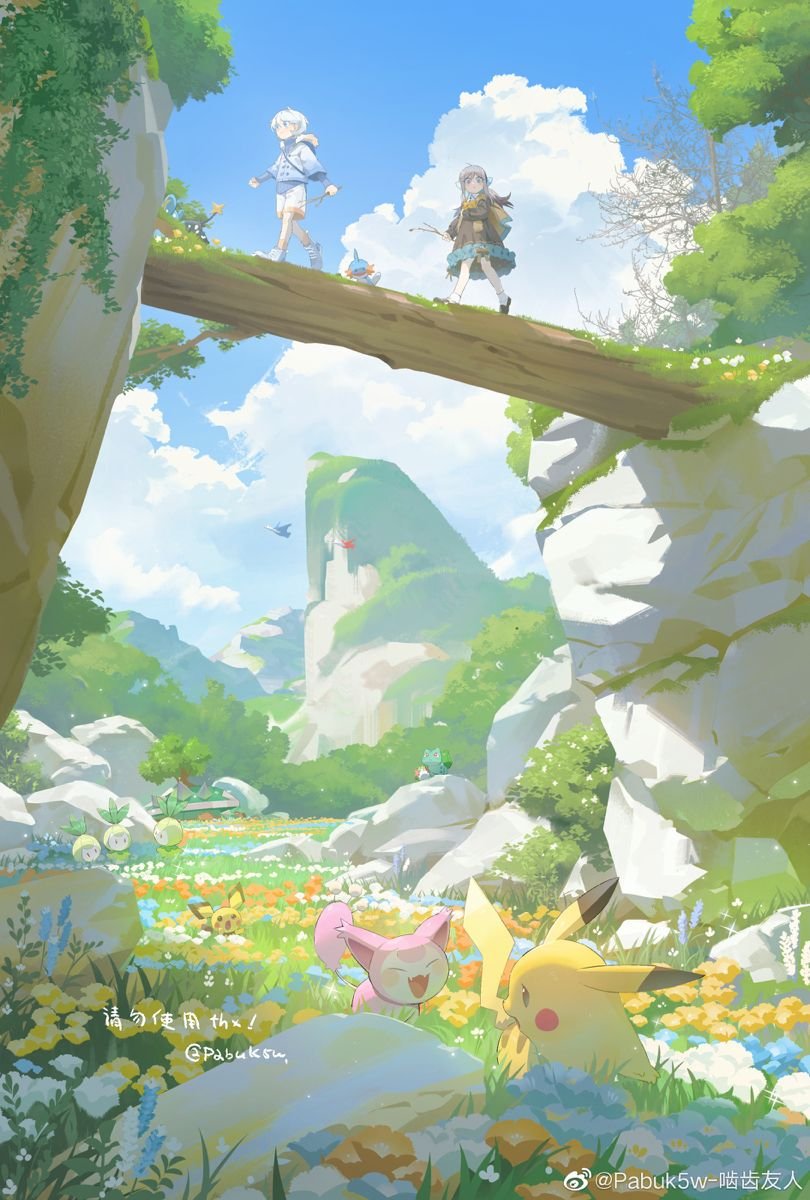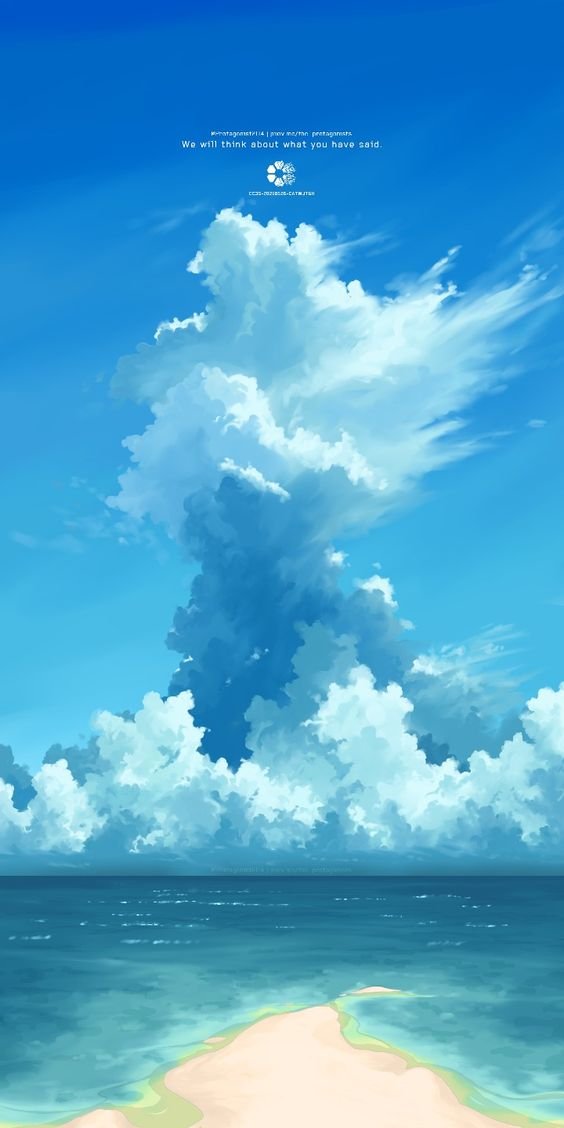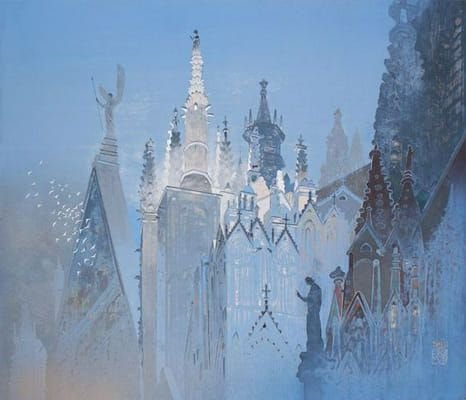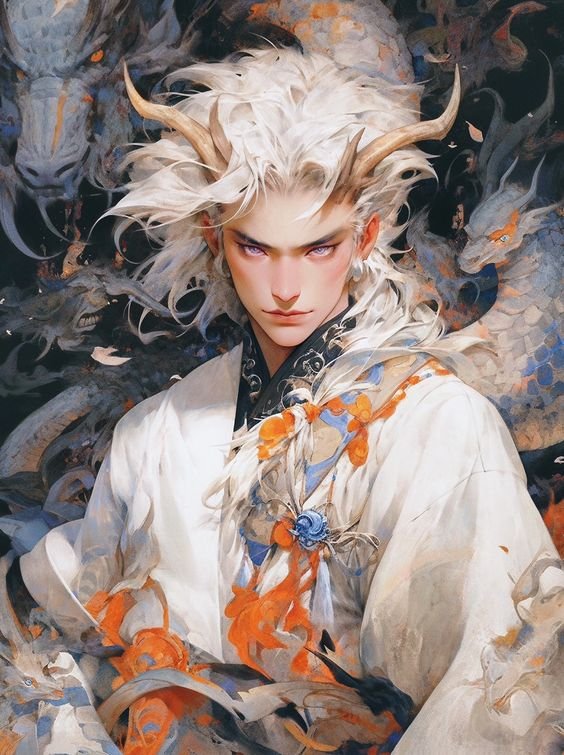
The World of Ameart
The Age of Snowspring
Navigation

The People
Those that live in Ameart
The Races
Mortal Humans
Little to no innate magical ability. Laveil calls the human population “The Garden”—implying it is the duty of the elves to care for them (and obviously many mortal and elven scholars alike have spent time on the various interpretations of this name).
These peoples come in a variety of neutral skin tones from lily white to charcoal black. The most common is a medium beige. The more unique their coloring, the more tied to the Laveil they are believed to be. For example, children born to a mortal that is in contract with an elf are often granted unique hair, eye, or skin colors.
The only way for mortals to gain magical abilities is for them to enter contracts with an elf. More on this is in the Magic section.
Laveil Elves
Pointy eared creatures with innate magical abilities gifted from Laveil. The majority of elves are from Laveil—they sprung from the heavenly plane, fully formed. There are only four Born Elves—Ren, Calbram, Ora, and Oberon. All others are from Laveil.
Those from Laveil retain some—but limited—knowledge from Laveil. Existing on Ameart is like awakening from a long dream and elves can only remember Laveil in fragments. The Born have no memory of Laveil at all, but are sometimes given whispered messages or watercolored visions from whatever powers live in the beyond.
Elves are exceedingly rare at the beginning of the story. More can be found in the History section.
Every elf has an innate tie to an animal and can transform into said animal at will. They also have one specific power that is unique to them. No two elves have the same ability.
Their magic is innate but grows exponentially when their “garden” of mortals is tended and blossoming. The more they care for mortals, the more mortals care for them—the more their powers grow.
Elves are functionally immortal, though they can be killed using magic-imbued weapons or through beheading. If an elf is killed in one of these ways, they have to be laid to rest, or else they turn into Dark Magic that haunts the world. The more powerful the elf, the more devastating the Dark Magic. More on this in the Magic section.
They don’t seem to age past adulthood.
Half-Elves
Elves and humans can couple and create children. These children sometimes have innate magical gifts, though their connection to Laveil is too distant for visions or memories.
Culturally, half-elves are considered dangerous because the lack of connection to Laveil makes elves uncomfortable and their magic makes mortals uncomfortable. Their appearance is often tied with their elven parent’s animal familiar. It’s not true, but many people believe they’re slow of mind or deformed or otherwise “incorrect.”
As half-elves continue their families with mortals, the connection to magic becomes weaker and weaker in each generation. It’s said that some distant connection to elves allows mortals to do small, random magics—like a mother being able to lift a cart that falls on her child. Or a man being able to predict the weather for the day.
They live a normal mortal lifespan, though the effects of aging seem to have less effect (in other words: they stay hotter for longer).
Dragons
There are a number of creatures from Laveil that are not elves, including dragons. Dragons are sentient, wise, magical creatures. They do not tend “the Garden” but instead protect magical land from those that would do it harm. Where elves protect mortals, dragons protect Ameart itself. Because of this, they are often at odds with elves—and mortals—and are considered very dangerous.
Their numbers are very few during Oberon’s reign, as he’s ordered them killed on sight. They cannot breed—they only come from Laveil, springing up every few hundred years. Some mortals worship dragons but it has no effect on magic for either party.
Dragons can appear humanoid with horns, scales, or a tail, but often remain in their enormous form, which varies from Big Lizard to Big Stingray to Big Moth. They always have horns and a tail with an enormous, dangerous stinger.
Etcetera
Other Laveil creatures exist in small pockets across the world—goblins, magical deer, nymphs. They are often sentient and capable of communication, but their purpose is not as defined as elves or dragons.
Elven Rulers

The World
Places in Ameart and beyond

The Kingdoms
-

The Bluelands
The northwestern corner of the mainland. Contains The Blue River, which is the largest and most powerful river in the world. Known for its enormous snowcapped mountains that circle the kingdom, all the way out to the sea.
Once ruled by four kings that have all stepped down or been killed by Oberon.
The largest city in The Bluelands is Norenard.
-

Rubru
The southern most kingdom in Ameart. Mostly a flat vista full of farmland, it’s now also home to the largest and most dangerous desert in the world, called Medja.
The largest city is called Ojor. This is where Oberon’s castle estate (“The Keep”) stands on a tall hill overlooking the rest of the city.
-

Qorsuk
The forest kingdom ruled by Cesmina. Private, well-protected, and smaller than the other two kingdoms. Qorsuk has the benefit of the world’s oldest and most powerful trees, which make it nearly impossible to overtake. All of the surrounding land has been absorbed by Rubru in the last century.
Often considered a safe haven from Oberon.
-

Silfr
The ocean and all its islands are part of Silfr’s kingdom. A 5,000 year long war was waged on the mainland dwellers who dared build technology to traverse the seas.
Mortals living on the islands are forbidden from traveling to the mainland and vice versa.
Isles are ruled by pirate kings given power by Titan himself.

Laveil
A magically powerful plane of existence that is suspended above or among Ameart. Not much is known about the Laveil. Elves have the closest connection and their understanding is limited to fragments.
The Old Gods—Fate, Death, Time, the Seasons—are believed to reside there in stunning palaces of white marble and they are the ones that create the ever-delicate balance of power on Ameart. Elves supposedly go there when they die, along with their followers, if the followers were devout enough.

History
All that was
Long Ago
The creation of Ameart (a word meaning “The Garden”) is shrouded in mystery, but most people can agree that it was created by—or from—Laveil. Mortals, elves, dragons, and all living things came to exist through Laveil’s divine intervention.
Elves, being the only race that could somewhat communicate with Laveil, shared Laveil’s intentions with the world: to treat the mortals as The Garden that the elves would tend. From this partnership, magic and strength would grow, and the lands would be prosperous and good.
It was thought, for a long time, that elves couldn’t bear elven children—only half-elves were possible if elves bred with mortal humans. However, during one celestial springtime in the Silfran War, elves found themselves capable of having offspring. This is when Oberon, Calbram, Ren, and Ora were all born.
The Silfran War
Though Ameart faced many struggles in its long, storied past, no conflicts were quite as traumatic as the Silfran War. Titan, the elf god of the seas, was tasked by his mortal followers to help them protect the oceans and their islands from mainlanders that sought to pillage their treasures.
Titan agreed to this request and it began 5,000 years of on-and-off war. Because all seas touch the mainland, the conflicts were never-ending. There were times when Titan and his mortal followers believed they were entitled to the parts of the mainland that touched the sea. There were times when mainlander mortals and elves believed they were entitled to the islands that dotted the coast.
The Born (the elven children) came to be during this time of war, which had a rippling effect. Elven children knew only violence and conscription from the beginning.
The war finally ended after The Fox God Ren crafted a weapon powerful enough to quell all sides. Rather than lose all of his Silfr mortals, Titan pledged peace with The Bluelands and Rubru. Qorsuk mostly removed itself from the conflict much earlier than this.
There were several centuries of peace, until Ren’s 500th birthday.
The Death of Winter
Winter—Oberon’s mother and the most powerful elven god in Ameart—was brutally killed on Ren’s 500th birthday.
What’s worse, her murder resulted in a desecration of her remains, and opened the world to the most powerful curse ever recorded. It was called 100 Years of Winter. Icy murderous blizzards coated all of Ameart, killing hundreds of thousands—perhaps even millions—as society collapsed under this magical curse. Many elves were lost in this time, too, as their followers died and their magic weakened and they couldn’t carry on.
Ren was blamed for Winter’s murder—he had motive, seeing how he didn’t want to join Oberon’s court as instructed. It was believed he killed Winter in an attempt to end the obligation he had. It worked, but at a terrible cost. For 100 years, Ren went into hiding, and the elves were largely blamed for the downfall of the world.
Elves lost their many allies and were hunted, outlawed, and are largely considered “dangerous.”
Oberon’s Age
Oberon discovered how to end the curse. He saved the world and was lauded as a warrior, hero, and god. His prize for doing such a remarkable feat was almost endless worship from mortals, which allowed him the power necessary to take political footing in Rubru.
Once he was declared the one king of Rubru, he turned his sights to The Bluelands. He eventually dethroned or killed the kings of The Bluelands and united both kingdoms under one Godking. This new nation is called The Unified Land of Rubru.
In the last seventeen years, he’s enacted many laws for “the benefit of mankind.”
Elves cannot live outside of his court. Any living elf must serve Oberon only. Any other elf spotted “in the wild” is to be captured and brought to Oberon for judgment.
Mortals and elves cannot marry, create children, or fraternize in any way.
Half-elves cannot conduct magic, even innately, which means half-elves are generally outlawed from society and, like elves, must be brought before Oberon for judgment.
The worship of elves other than Oberon is forbidden. The worship of other creatures—dragons, Laveil itself—is allowed but carefully tracked for any wrongdoing.
There is a magical prison that Oberon operates for those who break his rules but do not receive the penalty of death. This prison keeps all residents powerless and out of touch with the outside—prisoners are granted privileges only if their skills benefit Oberon in some specific way.
Despite these restrictions, the atrocities he committed against monarchies, and his cold nature, Oberon is still heralded as a beloved hero. His birthday is celebrated for a fortnight every spring. (Astrology doesn’t exist as a practice in Ameart, but Oberon is a Pisces.)
Magic
The rare and coveted
Elves
Assigned an animal totem at birth that they can transform into at will
Assigned a unique magical ability
Elves are ageless, immortal, heal rapidly, are faster and stronger than mortals, can go a long time without food or sleep, and have a natural inclination towards material goods
Can grant wishes for mortals
The more mortals that worship or partner with an elf, the more powerful that elf’s unique magical ability
With zero worshippers, elves don’t die, and don’t lose their powers—they simply become weaker
When they die, elves are believed to return to Laveil
If they die and aren’t properly laid to rest—that is, if part of their physical form remains on Ameart—they become curses
The type and power of the curse depends on the strength of the elf at the time of their demise
Other Magics
Dragons, goblins, nymphs, and more all exist with their own unique magical properties, but these gifts cannot be shared with mortals
Trees, such as those found in the Qorsuk Forest, sometimes have magical properties that create physical barriers and stop all harm befalling those beneath their shade
Magical items are rare and highly coveted and range from trite (a seashell that plays music when you put it up to your ear) to remarkable (a paper fan that can control air currents)
Half-elves have simpler magic than their elf counterparts or mortals with contracts (eg.: a half-elf might need half as much sleep as a mortal)

Glossary
The language of Ameart
The common tongue in The Bluelands; there are a wide variety of dialects that vary from region to region, village to village. The “standard” form is used in Norenard, the largest city in The Bluelands.
Enrecois
Laveil
The heavenly plane that created all things.
Rubresh
The common tongue in Rubru.
Silfranoi
The common tongue used on the ocean and in the kingdom of Silfr.











